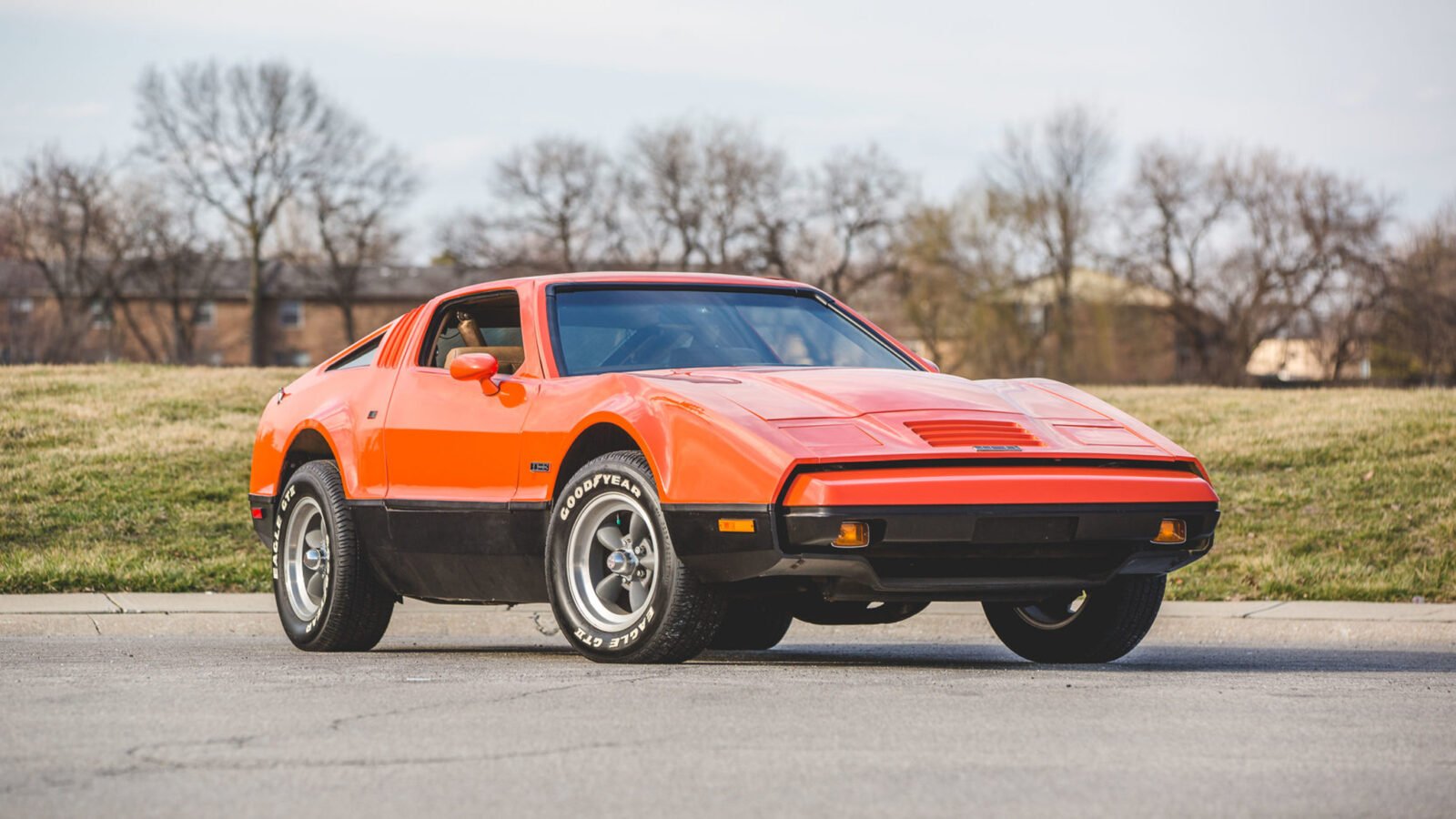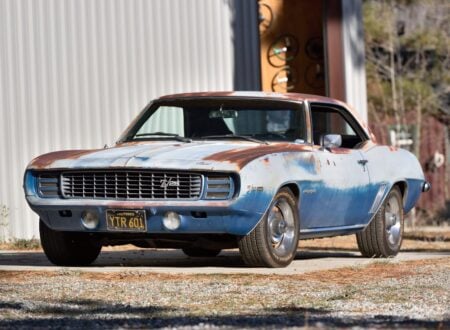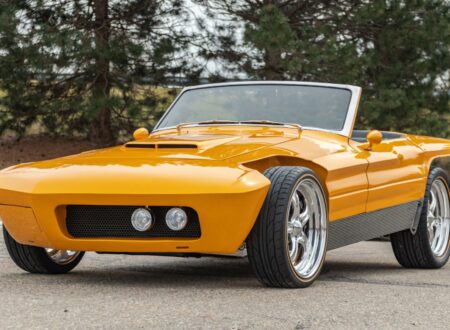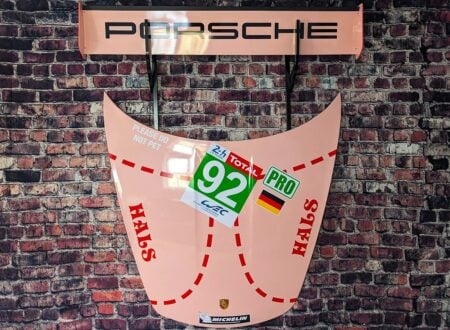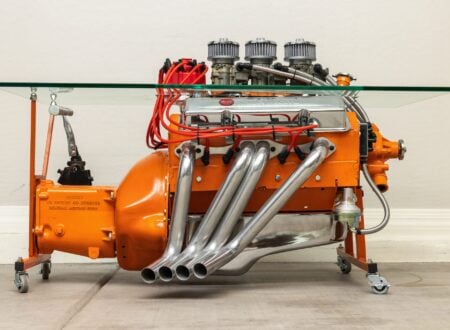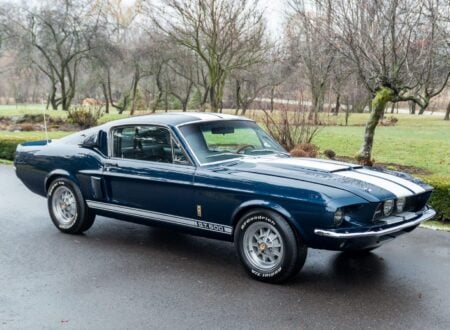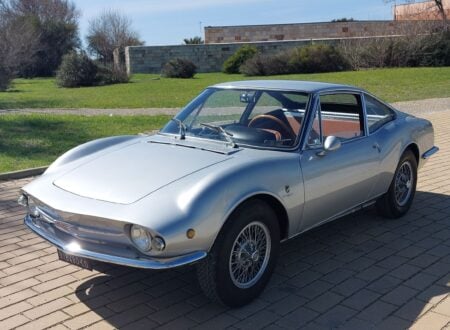The Bricklin SV-1 – A Canadian Match for the Corvette
In April 1975 Car and Driver magazine had the opportunity to do a head to head test of the Chevrolet Corvette and a new Canadian built rival, the Bricklin SV-1. You can read the full May 1, 1975 test here, but in summary the performance of the two cars was near identical.
The Corvette had a North American rival that not only matched its performance, but which also matched it in terms of style and crowd gathering ability.
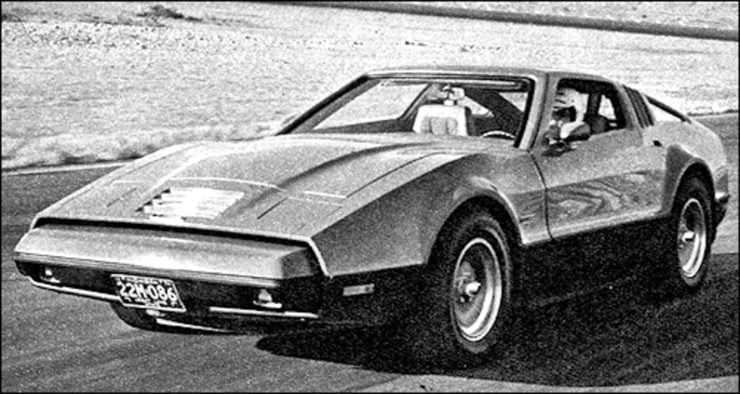
The Bricklin was looked upon with great interest by another prominent Detroit figure, John Z. DeLorean.
DeLorean found that he and Malcolm Bricklin could not form a business partnership so he went off to begin a project of his own: the car with gull-wing doors that he created was the one Doctor Emmett Brown turned into a “time machine with style” for the movie “Back to the Future” and it bore a striking resemblance to the Bricklin SV-1 with its gull-wing doors and clean angular styling.
The Bricklin SV-1 however could get to 88 miles per hour rather more quickly than the DeLorean thanks to its 220 hp V8 engine.
Plumbing Supplies And The Subaru 360
The story of the Bricklin SV-1 began as Malcom Bricklin dropped out of college and invested his time and talents into his father’s hardware and plumbing supplies franchise, which was based in Orlando, Florida. With his strong entrepreneurial skills Malcom managed to turn the family’s business into a multi-million dollar franchise of a chain of hardware stores and with such an elegant sufficiency of finance behind him, not to mention being flushed with success, he decided not to stop there but to see what other projects his Midas Touch might make possible.
By this time it was the mid 1960’s and to understand Malcom Bricklin’s next choice of project it is helpful to see his decision in the historical perspective – what was going on in the world at that time?
The 1956 Suez Crisis had shown people the ease with which their supplies of fuel could be threatened and in that period of post-war austerity the Suez Crisis caused the British government to reintroduce fuel rationing while in the US and Canada the idea that the future would herald the demise of the big American car and see its replacement with smaller and more economical modes of transport gained some traction.
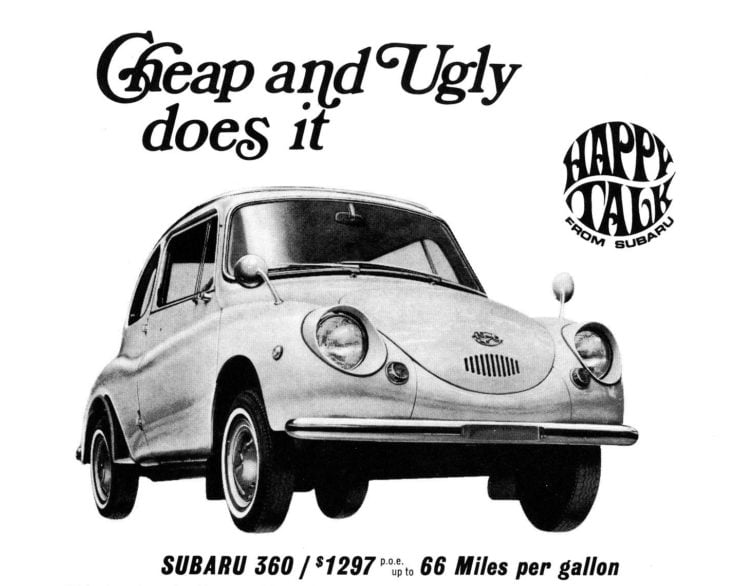
This was the period in which the “bubble cars” from such makers as Heinkel and BMW Isetta became popular in Britain and Europe and even had a footprint in the United States: a young rock ‘n roll singer named Elvis Presley had been driving around in his Messerschmidt bubble car before his career took off.
In Britain this was the period that gave birth to the iconic Mini, and motor scooters also became fashionable with young people. Seeing these things Malcom Bricklin could see an opening for establishing a franchise business just like the one he’d just set up for hardware, but this time selling small cars and motor scooters.
He found a Japanese company – Fuji Heavy Industries – who were wanting to establish a foothold in the North American market – and who made the Fuji Rabbit motor scooter, and who also made the Subaru 360 micro car which was basically a bubble car with four wheels instead of three. So his next venture was to set up Subaru America and start selling franchises for those products.
While the Fuji Rabbit motor scooters sold like little hotcakes the Subaru 360 was dealt a death blow when the Chicago based “Consumer Guide” magazine reviewed the Subaru 360 and found it fared worse than anything else in crash tests, so they stated that it was “the most unsafe” automobile on the market. The little Subaru that had proved to be a perfect small car for Japan and her roads back in the mid-1960’s was way out of its depth on roads shared with the huge American cars and pickup trucks.
This led Malcom Bricklin to conclude, perhaps too hastily, that Subaru America had no future, and so he sold his interest in the company and with all that lovely investment capital burning a hole in his bank account he got thinking about how best to invest it in a new money-making venture.
The “Safety Vehicle 1”
1965 had seen the publication of Ralph Nadar’s book “Unsafe at Any Speed” and it was in this environment that Malcom Bricklin began putting together his ideas for a car for the 1970’s. He seems to have reasoned that there would be little point in trying to produce a standard family car as the major manufacturers were already doing that and he could not be competitive. To begin in the car industry he needed a Halo automobile, and that meant a sports car.
He could create an exotic sports car and, just like Lotus Cars of Britain, he could make it economically on a small scale. Toyota were making their 2000GT, Mazda made their Cosmo, and Chevrolet the Corvette. He could do something similar but he needed an angle to make his car something different and desirable. Safety seemed to be high in the public interest at that time so he decided to build the Bricklin Safety Vehicle. This was to be a car that delivered what British car maker MG promised in their advertising for their sports cars – “Safety Fast”.
Bricklin established a new company, General Vehicles Inc. based in Phoenix, Arizona, and went looking for a suitable place to set up manufacturing. His research would ultimately take him to Canada, to the maritime province of New Brunswick, where the Premier Richard Hatfield would embrace the project as a way to provide employment for local workers.
With this in mind the provincial government would provide an initial subsidy of USD$4.5 million to get the first run of cars into production. Not only that but they would also provide an empty factory building and a promise to subsidize the worker’s wages.
As the project took shape two production facilities would be established in New Brunswick, one in St. John and a body construction works in Minto.

Design and Development: From Prototypes to Production
Malcom Bricklin got started on the concept and development of his new sports car in 1971. The original concept work was entrusted to Bruce Meyers of Meyers Manx fame but was transferred to a designer named Marshall Hobart who worked to perfect the design in collaboration with Richard Dean Sawitskas, who is best known by the name Dick Dean.
Dick Dean had become famous during the mid-late 1960’s, particularly because of his 1969 Shalako which made the cover of several magazines including Car & Driver, Rod & Custom, Motor Trend, Hot Rod, and Playboy. It was because of one of these cover stories that Malcolm Bricklin sought out Dick Dean to help with his car project.
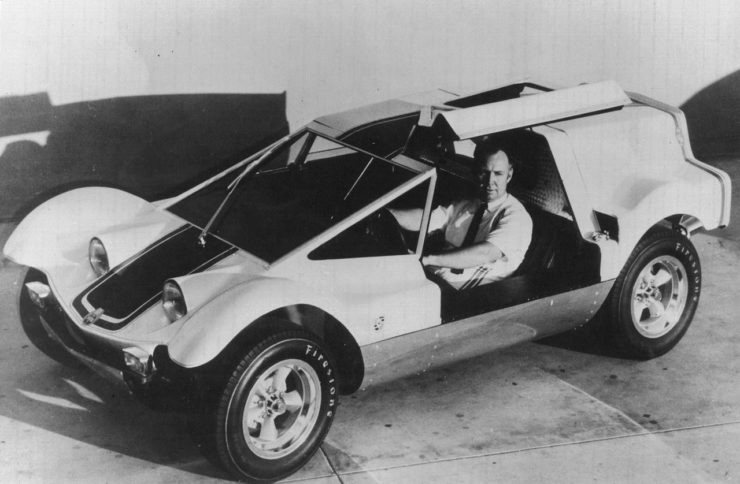
Malcolm Bricklin’s initial idea was to make something a bit like a British Lotus in concept. It was to be powered by a four cylinder Opel engine and was to have a fully independent suspension to give it superb handling.
The four cylinder engine idea was scrapped quite early, presumably because the car’s performance would have been on a par with the Brazilian Volkswagen SP1 and SP2 “sports” cars which were notably under-powered. So a Chrysler “Slant Six” was installed instead. This Chrysler engine was the one used in the popular Chrysler Valiant sedan and it had an excellent reputation as well as being common. It was an engine that most mechanics would know how to fix, and for which parts were readily available.
The design was done in the conventional way for building a new production car; from clay mock-up models, and then the development and construction to create a running prototype. This first running prototype is interesting as it shows the nature of the original design concept. Dubbed the “Gray Ghost” because it was painted silver-gray this car mated the Chrysler engine to a four speed manual gearbox and also used a Datsun 510 rear differential and fully independent trailing arm rear suspension.
This combination would make that Bricklin prototype quite like the 1969 Datsun 240Z in terms of performance and handling potential. The car used a range of off the shelf parts from Datsun, Toyota and GM Opel and had a tilting steering wheel assembly from a Chrysler.
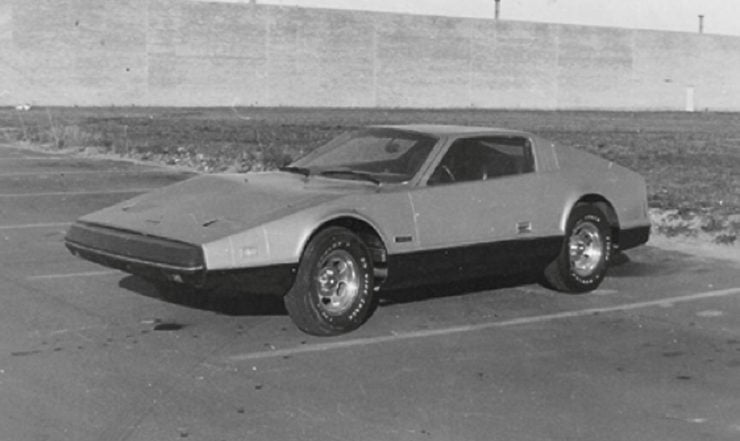
Malcolm Bricklin began working with Herb Grasse Design and Advanced Vehicles Concepts (AVC) of Michigan in 1972 to work from the “Gray Ghost” and re-engineer it into a production ready car. Significant in this process was the work of Tom Monroe who would go on to become the Chief Engineer of Bricklin’s company.
In this period AVC built seven of the next eight prototypes.
These prototypes provide a summary history of the re-engineering and development of what would become the production car.
The first of these was painted red and had a fiberglass body on a steel perimeter chassis. The engine used was an AMC 360 V8 which was later changed to an AMC six cylinder. This car did not use the Datsun 510 fully independent rear suspension but instead used a front and rear suspension from the AMC Hornet. This meant it had unequal “A” arms with coil springs and telescopic shock absorbers at the front and a live axle with semi-elliptic leaf springs at the rear. The brakes were also from the AMC Hornet and comprised discs at the front and drums at the rear.
The second also had a fiberglass body and was painted in yellow-ochre. This was the first prototype to have a fully fitted out interior. Its first engine was an AMC 360 which was then changed to a Ford 351 with automatic transmission. This car was later painted red.
The third was fitted with a red acrylic body and had an AMC 360 engine and automatic transmission.
The fourth had a white acrylic body and four speed manual transmission.
The fifth car was used for crash testing and had a white acrylic body and automatic transmission.
The sixth prototype was not completed but was only made as a chassis, frame, and “bird cage”.
The seventh was fitted with a “Suntan” acrylic body and automatic transmission.
The eighth and last prototype was made with an acrylic orange body and was used for crash/impact tests. This prototype was built by General Vehicle Incorporated (GVI).
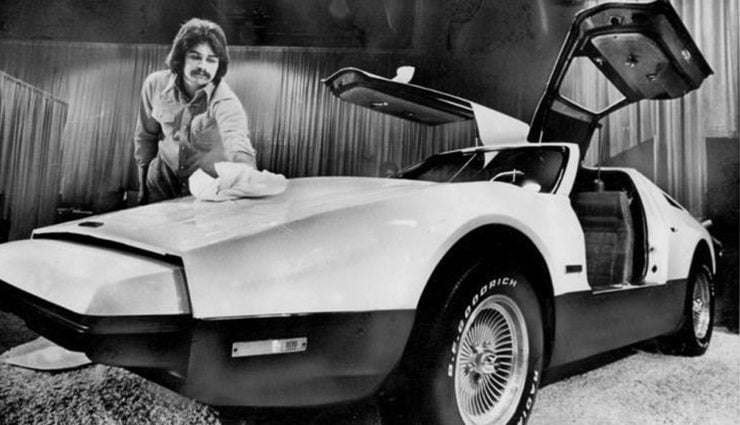
The Bricklin SV-1 Production Cars
The production of the Bricklin SV-1 began in 1974 with 774 cars made. These cars were built on a steel perimeter chassis with a tubular steel cage around the passenger compartment to provide a safe cocoon for the occupants, and it was also fitted with an integral roll bar to provide roll-over protection.
This was a period in which it was thought that US regulators might ban convertible cars because of their lack of roll-over protection and Malcolm Bricklin’s team were doing all they knew to do to ensure their car would pass or exceed the most stringent safety regulations.
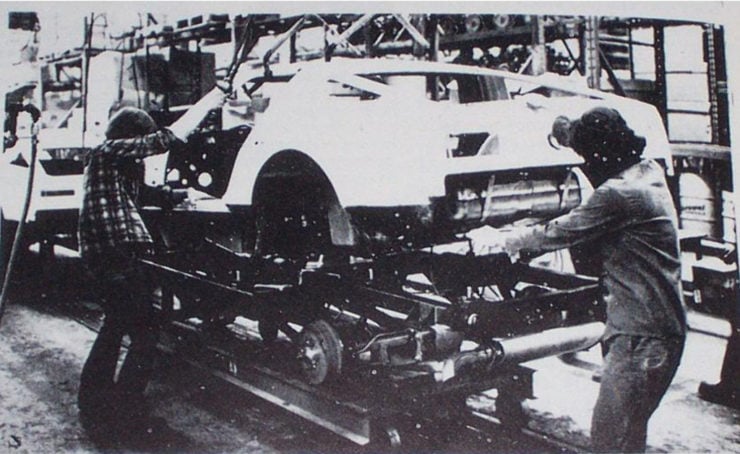
Much changed from the original concept of a lightweight sports car with a fully independent suspension. The engine grew from four cylinders, to six cylinders, to eight. To accommodate the power of the V8, and to use affordable “off the shelf” parts, the rear suspension was changed to a live axle with leaf springs. The original fiberglass body was changed to fiberglass with an acrylic top layer which had the color of the car molded in so the car did not need to be painted, and minor scratches could be buffed out.
The engine used in the first production Bricklin SV-1 was the AMC 360, a V8 that was used in the Jeep J-Series, Wagoneer SJ and Cherokee SJ, as well as being used in the AMC Rebel and Matador passenger cars of that era. This choice of engine was without doubt influenced by availability issues: GM would not have wanted to supply engines to a company that was going to build a car that was in direct competition with the Corvette for example.
The AMC 360 engine as fitted to the SV-1 had a displacement of 5,896.1 cc (359.8 cu. in.) and was fitted with a four barrel carburetor. When development of the SV-1 began in 1971 this engine had been producing 285-295 hp, but as emissions regulations came in during mid-1971 this was reduced to 220 hp.
Had the engine not been subject to those emissions restrictions the SV-1 would have had a 5.9 liter 285 hp V8 under the hood and would have been a lively little performer. As it was though the 220 hp V8 was an impressive feature of the SV-1: we can be sure it looked good when the hood was raised, that it sounded gorgeous, and that it performed nicely despite having 3,470 lb of car to haul around – the SV-1 was no lightweight and would have benefited greatly from extensive use of aluminum alloy – but steel was cheaper and much easier to weld.
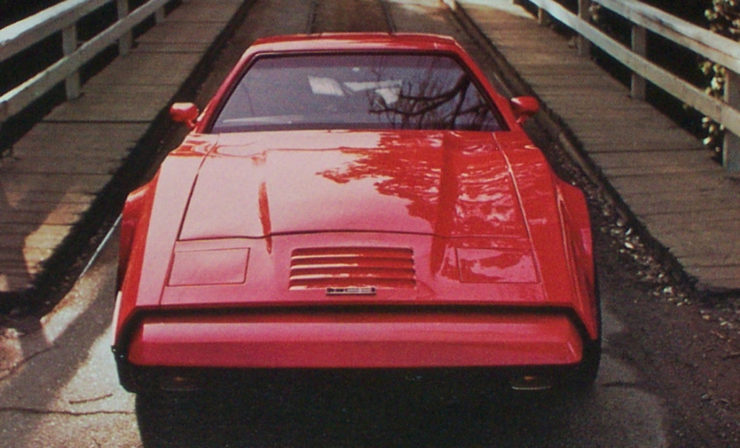
For the early production cars the available gearbox was either a BorgWarner T-10 four speed manual or Chrysler Torque Command 3 speed automatic sending the power to a live rear axle with a ratio of 3.15:1 which was mounted on semi-elliptic leaf springs with telescopic shock absorbers. The front suspension was by unequal “A” arms with coil springs and telescopic shock absorbers. Brakes were 11″ vented discs at the front and 10″ drums at the rear providing a swept area of 328 square inches.
Being a “Safety Vehicle” the design team incorporated what were probably over-engineered impact bumpers front and rear. To their credit these bumpers were integrated into the body styling beautifully and were one of the starring aspects of the SV-1 design.
As a small scale production vehicle the designers of the SV-1 had to use off-the-shelf parts wherever possible and for the tail lights Herb Grasse decided to use the same tail light assembly as he had on his De Tomaso Pantera. This was a tail light set made by Italian company Carello and were also used on cars from Lamborghini and Maserati: so “off-the-shelf” can be pretty exotic.
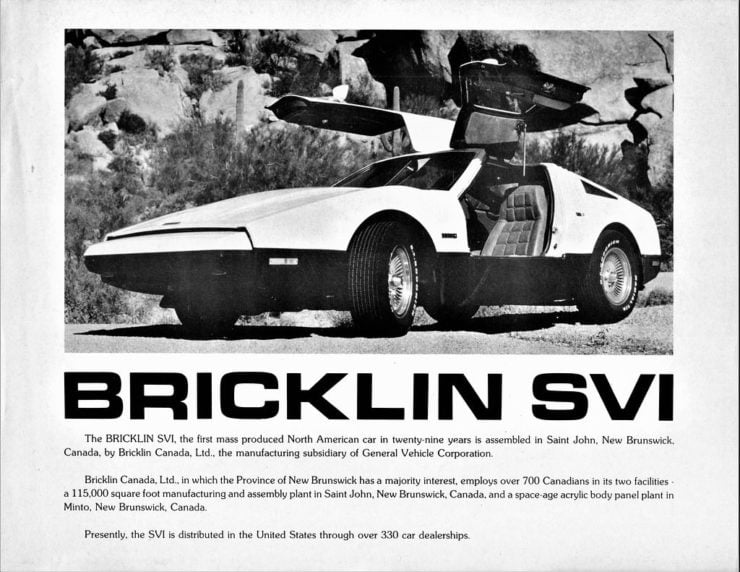
Stylish, but more controversial was the decision to use gull-wing doors. Gull-wing doors were chosen ostensibly as a safety feature as the doors would not open into the passing traffic flow. They are also good for getting in and out of a vehicle in the limited space of a car-park. However, on the downside, a gull-wing door has to be lifted up rather than just swung open and so the weight of the door becomes an important factor.
Each gull-wing door of the SV-1 tipped the scales at around 90 lb, which was too heavy for a person to lift open unassisted. These gull-wing doors were power operated by a hydraulic system which made door opening push-button effortless, but which was noted for being slow. If the hydraulic system failed however opening the doors manually was very difficult and beyond the muscle power of many people.
A major drawback to the hydraulic system used in the SV-1 was that if one attempted to raise one door at the same time as lowering the other one it would cause the hydraulic pump to fail. This is a failing that should never have found its way into a production sports car, but it did.
In 1975 Bricklin was forced to change engines from the AMC 5.9 liter 220 hp V8 to a Ford 351 cu. in. (5.8 liter) small block Windsor V8 which was rated at 175 hp, that modest power being partly due to its breathing through a two barrel carburetor. Although this was a distinct drop in power by comparison with the AMC’s 220 hp we should consider that the Ford Windsor V8 had been the engine fitted to the Ford Mustang, Shelby Cobra and Sunbeam Tiger in various forms.
So although in the Bricklin of 1975 it was not an engine that would cause neck straining acceleration it was an engine that would have allowed for some significant tweaking. Carrol Shelby had his Windsor V8’s getting up to 390 hp. So the potential was there, but Bricklin were in financial trouble by that stage and were not going to be able to capitalize on that potential.
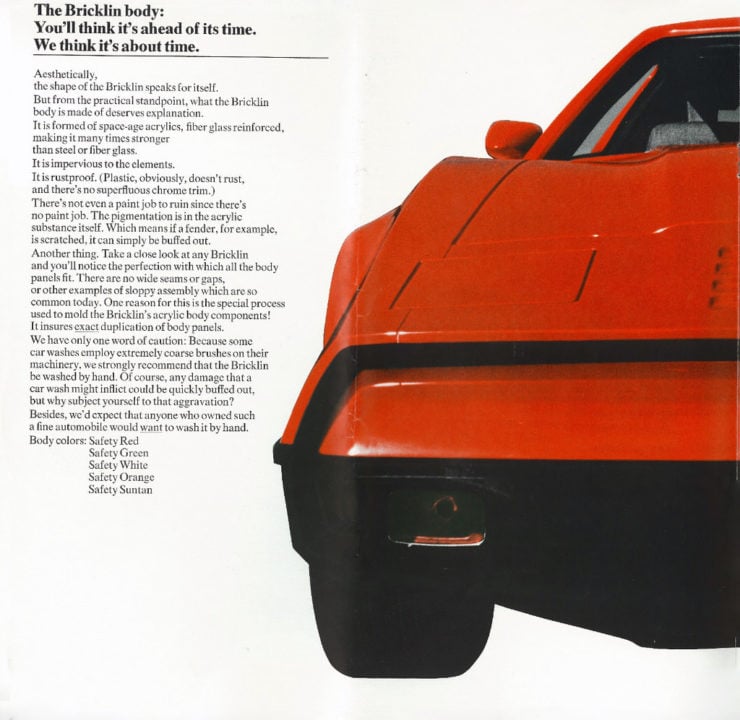
Murphy’s Law Manifests
Most readers will be aware of Murphy’s Law which tells us that “Nothing is as easy as it looks, everything takes longer than you expect, and if anything can go wrong it will, at the worst possible moment.” For those who aspire to building a sports car we should probably add “Everything will cost more than you expect.” And all of these things came to pass for the Bricklin SV-1 just as they had for the creators of the original Chevrolet Corvette.
As originally created the Bricklin SV-1 was intended to be a direct competitor to the Corvette and if things had gone according to plan it would have been. The cost estimates for the SV-1 originally predicted the car would sell for around USD$4,000. When it entered the market in 1974 the Bricklin actually cost USD$7,490, which was almost double the original price estimate.
By comparison in 1974 a base model Chevrolet Corvette sold for USD$6,082. The price of the SV-1 would continue to spiral upwards and by 1975 the Bricklin price was USD$9,980 and the base Corvette USD$6,810. Despite that Bricklin managed to establish more than 400 US dealerships and had thousands of cars on order at the time the company was forced into receivership.
The things that killed the Bricklin were the same things that killed many other automotive startups – poor quality workmanship, over pricing, and labor relations problems. The cars were built using mechanical parts made in the United States and so those parts posed no problems. At the St. John works the factory hands were tasked with the job of assembling the cars. This was the first point of difficulty as the quality of that assembly was sub-standard and this was particularly acute in the first year of production 1974.
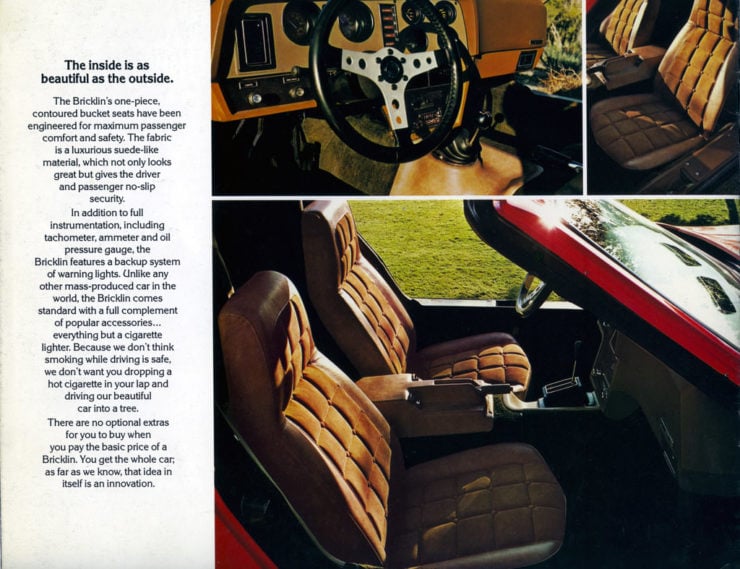
The second major area of difficulty was the Minto body works where the problems encountered in getting the acrylic layer to bond with the fiberglass resulted in a wastage of about two thirds of panels produced. Bricklin brought in Archie Hamielec, an expert from the McMaster University of Hamilton, Ontario. With his help the wastage rate for panels was reduced to around a fifth of production, which was obviously a lot better than two thirds but still not ideal.
The final straw was that Bricklin was hiring workers in a place where unemployment was at around 25%. This must have meant he was getting a lot of unskilled and under-skilled labor. There is reported also the problem that when hunting season came a large portion of the workforce left work and went hunting, leaving the factory badly understaffed.
So to sum up, the Bricklin was not killed because it was an inferior design – although if you were 6 foot tall you’d be much better off with a Corvette – but it was killed off by problems related to labor, quality control, and unforeseen technical problems related to the bonding of the acrylic and fiberglass of the body panels.
Despite having a backlog of orders on the books Bricklin was forced into receivership in 1975 with the last few cars being built from remaining parts in 1976.
Bricklin SV-1 Specifications
Chassis and Body: Steel perimeter frame with roll bar and tube steel cage around the passenger compartment. Fuel tank protected on five sides against impact damage. Body made of fiberglass with a colored acrylic layer bonded to it obviating the need for painting. Colors available were Safety Orange, Safety Red, Safety Green, Safety White, and Safety Suntan.
Engines: For 1974; 5,896.1 cc (359.8 cu. in.) AMC 360 OHV V8 engine delivering 220 hp and 315 lb/ft of torque. For 1975 and the few cars made in 1976; Ford 351 Windsor 351 cu. in. (5,752 cc) OHV V8 delivering 175 hp and 286 lb/ft of torque.
Transmission: For the AMC 360 engine – BorgWarner T10 four speed manual gearbox (137 cars), Chrysler Torque Commander three speed automatic gearbox (635 cars). For the Ford 351 Windsor engine – Ford FMX thee speed automatic (approximately 2,100 cars). Rear live axle from AMC Hornet with final drive ratio of 3.15:1.
Suspension and Brakes: Suspension system taken from the AMC Hornet. Front; Unequal “A” arms with coil springs and telescopic shock absorbers. Rear; Hotchkiss live axle with semi-elliptic leaf springs and telescopic shock absorbers. Servo assisted braking system from the AMC Hornet. Front; 11″ vented discs. Rear; 10″ drums. Total swept area 328 square inches.
Steering: Recirculating ball sector and gear. Turning circle diameter 34′ wall to wall.
Wheels and Tires: 15″ Wheels wearing FR 60 x 15 tires. No provision for a spare tire.
Dimensions: Length 178.6″ (4,536 mm), Width 67.6″ (1,717 mm), Height 48.25″ (1,226 mm), Wheelbase 96.0″ (2,438 mm), Kerb weight 3,520 lb (1,597 kg), Fuel tank capacity 21 US gallons. Ground clearance 5.5″.
Performance: Standing quarter-mile 16.6 seconds (attaining 83.6 mph). Top speed 118 mph (190 km/hr).
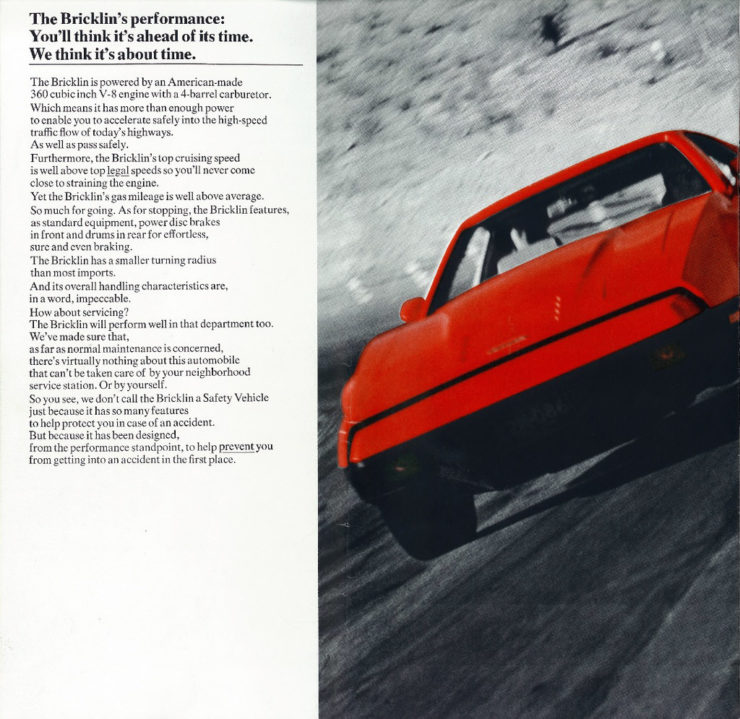
The End of the Bricklin SV-1 Story
The Bricklin SV-1 was a pioneering automobile and like any trailblazer it contained features that were new, unfamiliar, and therefore features that would attract negative criticism from reviewers. One area of criticism was the thickness of the “A” pillars and general lack of visibility from within the vehicle.
This was caused by the integration of the cage around the passenger compartment and integral roll-bar and the aerodynamic body style. Nowadays cars are constructed with integral roll-over protection and commonly have air bags installed in the “A” pillars which makes them sufficiently thick that the blind spot created can obscure an entire car from view. This is something that drivers of modern cars are used to and have learned to compensate for, but that was not the case in 1974.
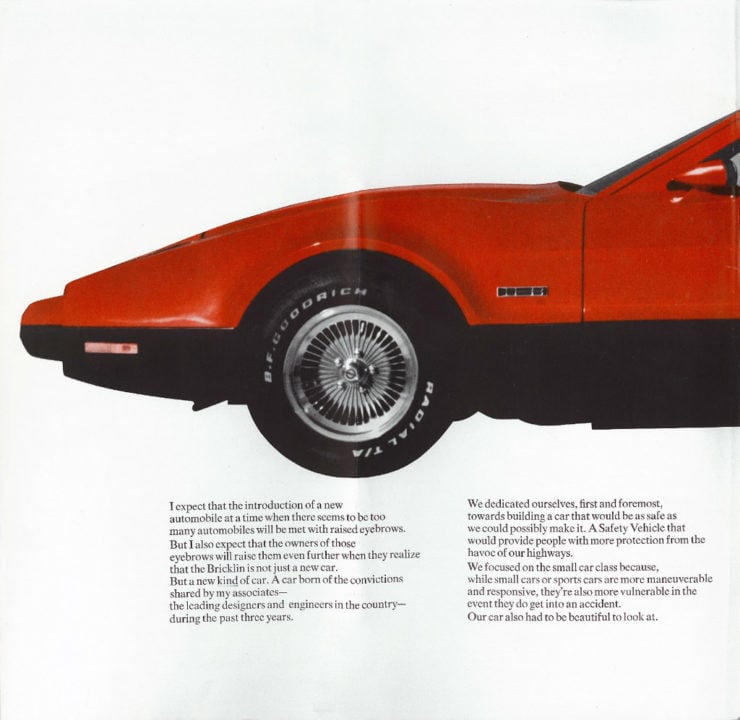
The Bricklin went to market as an unfinished prototype and suffered accordingly. It was created by a highly competent design team who got most things right – except for the mechanism for the gull-wing doors. Added to that the factory was staffed with workers who had mostly not worked on an automotive production line before and had to learn on the job. The resulting sub-standard workmanship would appear to have resulted from what would seem to be a lack in leadership, and a failure to train workers adequately. Financial pressures, including pressure to get cars rolling off the production line quickly, would seem to be the principal underlying cause behind putting an unfinished model into production in a factory that had been hastily established and staffed.
Nowadays the Bricklin SV-1 has a keen support network in the form of the Bricklin International Owners Club. Many of the surviving Bricklins have been stripped and completely restored and in that process the faults, including the gull-wing door mechanism, have been fixed so these restored cars are examples of what should have been, but wasn’t back then, but is perfected now.
The gull-wing door fix is the design creation of Terry Tanner and you can find more details from Bricklin Parts of Virginia.
Another good source for Bricklin SV-1 happiness is Big H Bricklin Parts and Service who are located in St. Louis, Missouri.
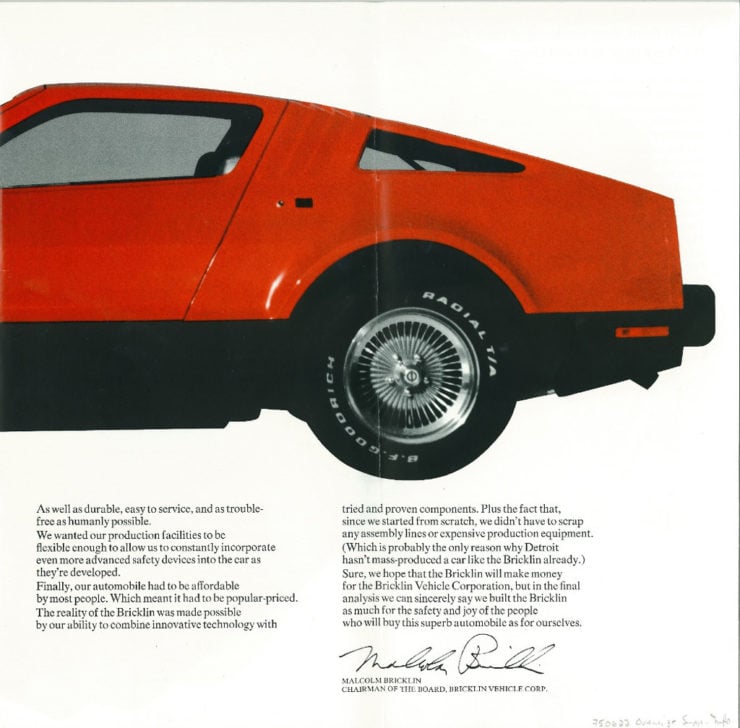
The Bricklin SV-1 appears on “worst cars” lists from time to time. From a design standpoint it doesn’t really belong on any “worst cars” list; the faults were in quality control and the need to cut costs during production. Had the money been there to give the car impeccable manufacturing quality control, sort out the door design, tweak up the suspension, and give the engine the Carrol Shelby treatment, a Bricklin could have been quite a machine. Which makes the Bricklin SV-1 a historic classic that is as yet largely undiscovered.
Perhaps its real moment of fame will come if the classic car collector market discovers it.

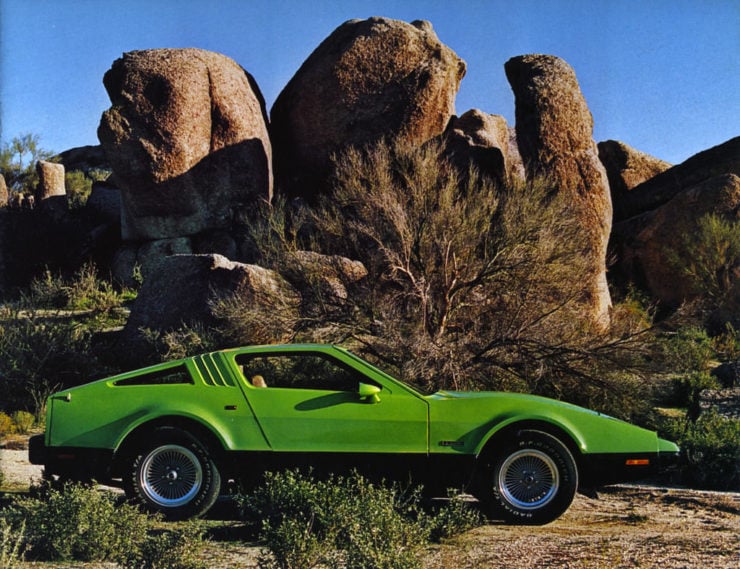
Photo Credits: Bricklin, Subaru America, Mecum Auctions.

Jon Branch has written countless official automobile Buying Guides for eBay Motors over the years, he’s also written for Hagerty, he’s a long time contributor to Silodrome and the official SSAA Magazine, and he’s the founder and senior editor of Revivaler.
Jon has done radio, television, magazine, and newspaper interviews on various issues, and has traveled extensively, having lived in Britain, Australia, China, and Hong Kong. The fastest thing he’s ever driven was a Bolwell Nagari, the slowest was a Caterpillar D9, and the most challenging was a 1950’s MAN semi-trailer with unexpected brake failure.

